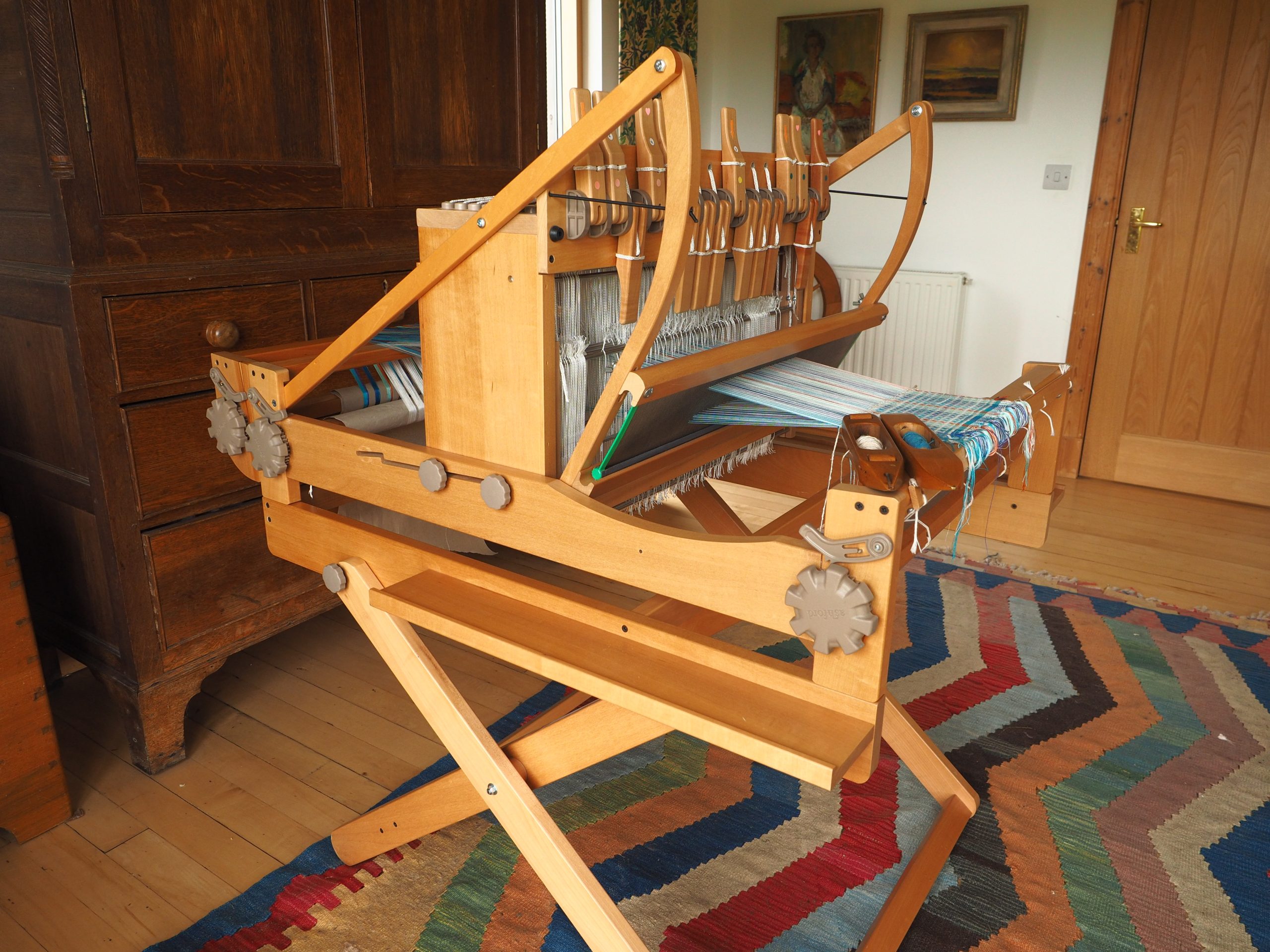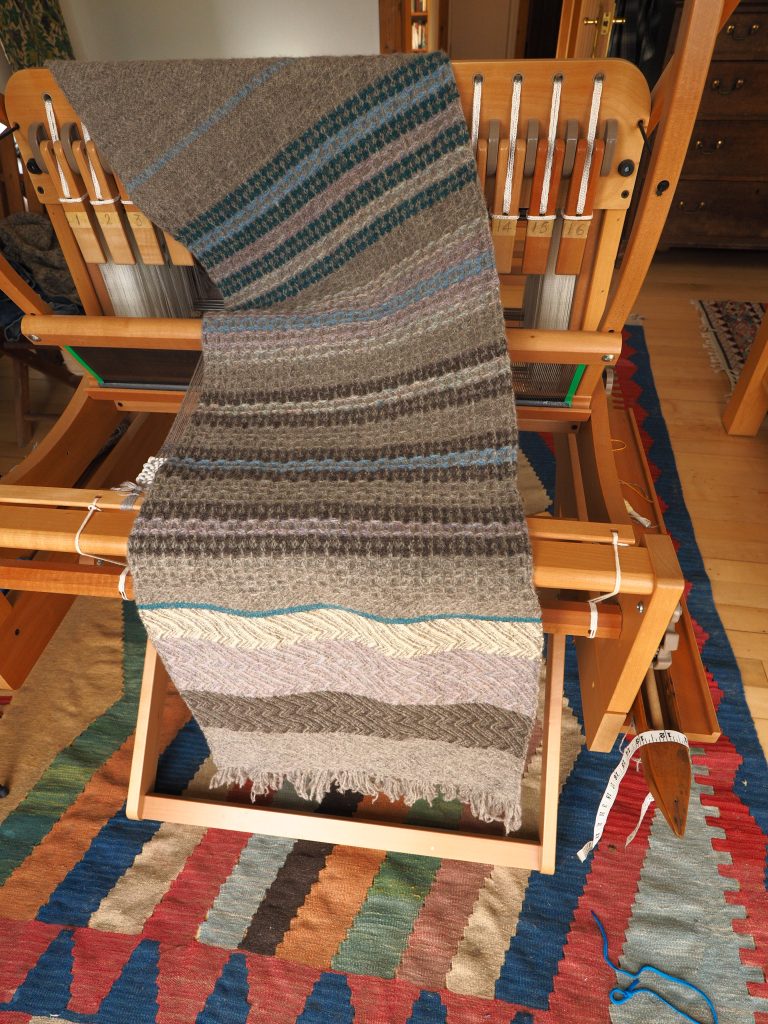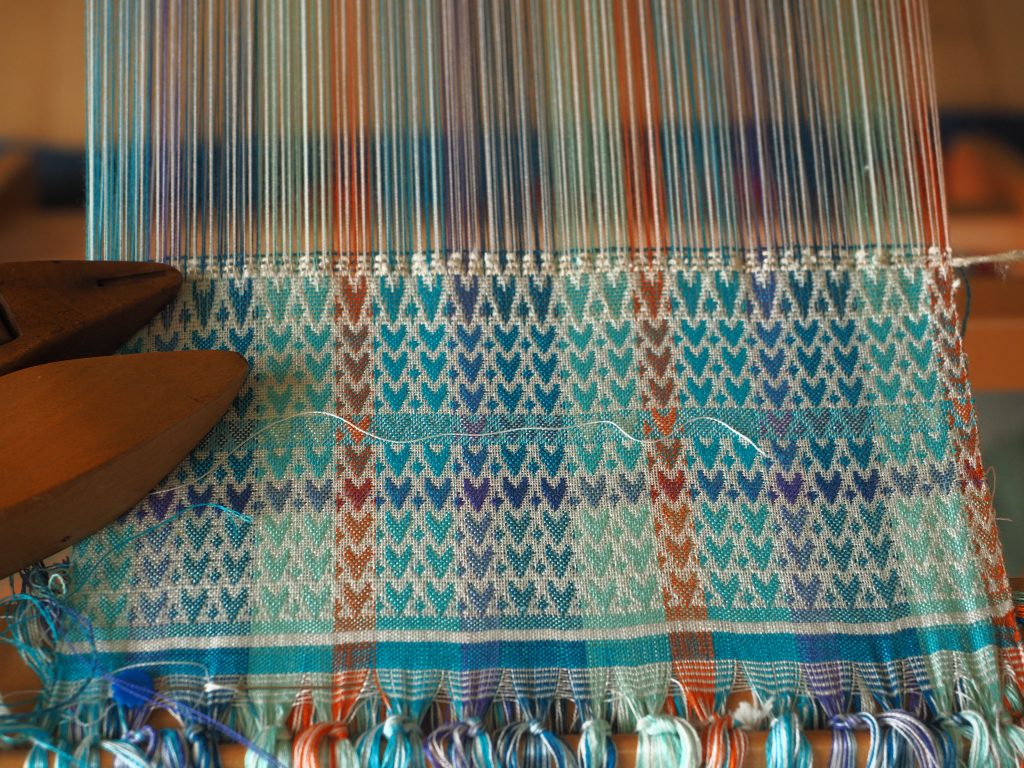

Ashford spinning wheels and weaving looms have a great reputation so tend to keep their value and fly off the second-hand market. This one here was a lucky find on The Loom Exchange, quite a rare beast with not-4, not-8, but 16-shafts, a second back-beam, and a floor-stand. One slight down-side though… a 500-mile round-trip to collect!
Table looms like this are ideal when you want to experiment with different weave-structures, yarns and colours. Each lever controls one of the shafts independently, and that extra beam can carry a second warp at a different pitch / tension (for corduroy and the like). It’s a supremely versatile set-up that allows a weaver to develop a new piece, try a few tweaks and twiddles, and get a bit more confidence in the final look & feel before committing masses of yarn and time setting up a full-scale run.
Table looms are good for learning about weave structures too, my early steps with David Gurney back in 2005 used a 4-shaft Ashford to explore tweedy twills with classic names like bird’s eye, herringbone, rose-path….
So… great for teaching and ‘proof of concept’ samples, but quite slow because you have to set every shaft for each weft shot, e.g. this beautiful sample on the loom when I picked it up, was a furnishing fabric intended for a 16-shaft production loom. With its fine silk yarns and complex lift-plan, weaving any more than a few inches of this on the sample loom would be a very laborious process.


Things can easily get confused with any more than four shafts, and weavers often mark the loom to keep themselves in order. Everybody has their own way of doing things though…
The previous owner used wee stickers to mark the shaft levers by warp colour (blue dots), motif (heart) and background (arrow).
The taped numbers are my contribution, and (look close!) a wee black sharpie mark on the beater makes it easier to find the centre of the loom; I also mark the centre heddles on each shaft.